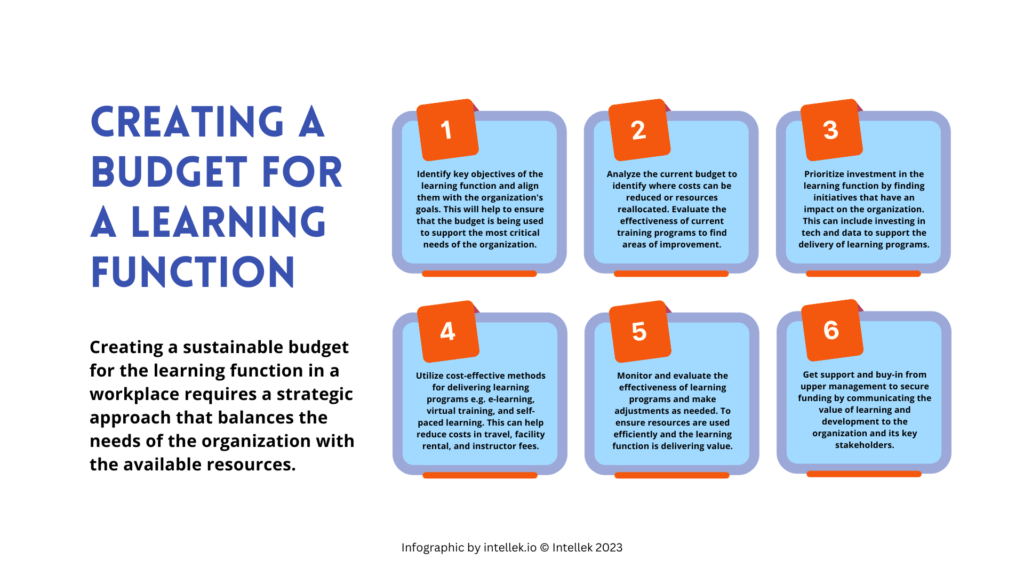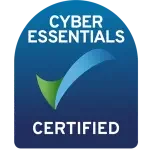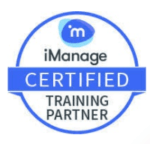
The learning function is one of the most important elements of any organization and maximizing the impact of workplace Learning and Development is key to its success. It is the responsibility of the learning and development (L&D) team to design, deliver, and assess company-wide learning programs that help employees achieve their individual career goals and business objectives.
The success of your organization – both in terms of its overall performance as well as its ability to attract new talent – is dependent on effectively designing and executing a strong L&D strategy that will get the most from your workplace Learning and Development.
IN THIS ARTICLE...
Challenges faced in Workplace Learning and Development
It is important to recognize the barriers you might be faced with when implementing your workplace Learning and Development strategy. Here are the most common issues we see organizations and L&D professionals facing in current times.
Common challenges and obstacles that you may face in implementing Workplace Learning and Development:
- Limited budget: One of the most common challenges faced when implementing workplace learning and development is a limited budget. This can make it difficult to invest in the resources and technologies needed to deliver effective training programs.
- Limited time: Another challenge is limited time, as employees may not have the time or flexibility to attend training sessions or complete self-paced learning programs.
- Resistance to change: Some employees may resist change and be resistant to participating in learning and development programs. This can be due to a lack of understanding of the benefits of the program, or a lack of trust in the organization.
- Lack of buy-in from upper management: Without the support of upper management, it can be difficult to secure funding and resources for the learning function. This can also make it difficult to communicate the value of the program to other stakeholders.
- Difficulty in measuring ROI: Measuring the return on investment of learning and development programs can be challenging, as it can be difficult to quantify the impact of the program on employee performance and organizational performance.
- Difficulty in keeping up with technology and trends: Keeping up with new technologies and trends in the learning and development field can be a challenge, as it requires continuous research and investment.
- Difficulty in Creating a sustainable budget: Creating a sustainable budget for the learning function can be challenging, as it requires a strategic approach that balances the needs of the organization with the available resources.
This article attempts to expand on these challenges, offering solutions and techniques that you could use to avoid these most regularly observed pitfalls.
Getting the right mix of Skills and Expertise
Building a strong team with the right mix of skills and expertise to support the delivery of learning programs is a vital step. To establish a proficient team, it is crucial to ensure that the members possess a balanced combination of skills and expertise that are aligned with your needs to effectively deliver training and development programs.
One example of an organization that has successfully implemented this strategy is Google. They have a dedicated L&D team that is made up of a peer-to-peer network and a diverse group of individuals with different skills and expertise, such as instructional designers, trainers, and coaches. This team works closely with other departments in the organization to design and deliver learning opportunities that align with the company’s goals and objectives.
A diverse group will help ensure that your organization’s learning strategy is relevant to all employees. It may also allow you to better leverage existing resources within the organization to eliminate a skills gap.
For example, if there is an employee who has experience as a teacher but works in finance now, they could take part in designing or delivering training modules on financial literacy and then be a mentor for people taking those modules once they’ve been developed.
Leverage Technology and Data in your Learning Program
Technology can be used to deliver, track and evaluate learning programs. The use of technology in this way allows L&D professionals to leverage data from a variety of sources to drive the design, delivery, and evaluation of learning programs.
A company that has successfully implemented this strategy is IBM. They use a variety of learning analytics tools to track and evaluate the effectiveness of their learning programs. They also use performance management platforms and HR systems to gather data on employee performance and engagement. This data is then used to make adjustments to the learning programs to improve outcomes.
The data sources you use could include:
- Learning analytics tools that provide insights into learner engagement and performance across courses.
- Performance management platforms such as Salesforce or Workday.
- HR systems such as Workday or SAP SuccessFactors;
- Social media platforms such as Facebook or Twitter;
- Analytics tools like Google Analytics provide insight into how people are using websites (and therefore potentially interacting with your eLearning).
Creating a culture of Continuous Workplace Learning
Creating a culture of continuous workplace Learning and Development within the organization can be a huge benefit. A culture of continuous learning and development can be created by encouraging employees to learn, share knowledge with others, and seek out new opportunities.
Encourage your employees to learn. Make it clear that you value their desire to improve themselves by providing them with the resources necessary for them to do so. This could include things like books, online courses, and seminars that give them access to information about topics related directly or indirectly to their work tasks (e.g. improving their writing skills).
Share knowledge within the organization through various means such as meetings where people offer experiences from previous projects or presentations given by experts outside your company.
By doing this you make it clear that you care about helping your people grow professionally while making sure they continue doing a good job at what they’re already doing well!
Amazon successfully implemented this strategy as they have a strong focus on continuous learning and development and encourage their employees to take ownership of their own learning. They provide employees with access to a variety of resources such as books, online courses, and seminars – and also encourage the sharing of knowledge within the organization.
Developing Effective Partnerships and Collaborating
Developing effective partnerships and collaborations with internal stakeholders and external partners is crucial to the success of the learning function in any organization.
This can help to enhance the quality and effectiveness of learning programs, align them with organizational goals, and make the most efficient use of resources. It’s essential to establish clear goals and expectations, define roles and responsibilities, and establish regular communication channels
An example company that has a strong focus on building partnerships and collaborations with both internal stakeholders and external partners is Deloitte. This includes working closely with other departments such as talent development and HRM to ensure that their learning programs align with the company’s goals and objectives. They also partner with external organizations to bring in new perspectives and knowledge.
Collaboration with Internal Stakeholders
The role of the learning function is dependent on effective collaboration with other functions, such as talent development, HRM (human resources management), business operations, and finance.
Internal stakeholders such as talent development, human resources management (HRM), business operations, and finance teams all play key roles in the development and execution of learning programs. By building strong relationships with these teams, the learning function can ensure that programs are aligned with organizational goals and objectives and that resources are used efficiently and effectively.
Developing External Partnerships
Working with external partners such as vendors, universities, and industry experts can also add value to the learning function. These partners can provide unique expertise, resources, and perspectives that can help to enhance the quality and effectiveness of learning programs.
For example, partnering with a vendor that specializes in e-learning can help to ensure that programs are delivered in an engaging and interactive format that is well suited to your employees. Partnering with a university can provide employees with access to cutting-edge research and thought leadership in their field.
Managing Partner and Stakeholder Relationships
Learning leaders need to be adept at building bridges between internal stakeholders, external partners, and customers. They should be able to identify opportunities where partnerships can lead to greater value creation for all parties involved in creating a compelling learning experience for employees or customers respectively.
Effective partnerships and collaborations are built on trust, open communication, and a shared vision. It’s essential to establish clear goals and expectations, define roles and responsibilities, and establish regular communication channels to ensure that everyone is on the same page.
Additionally, it’s important to have a clear understanding of the objectives of each partner, as well as their strengths and weaknesses, to ensure that everyone is working together to achieve the best possible outcomes.
Financial Sustainability in your Learning Function
The learning function is one of the most critical aspects of any organization. It ensures that employees have the resources they need to develop their skills, knowledge, and abilities so they can perform their roles effectively.
It’s also important for managers to consider how they can ensure that their workplace Learning and Development is financially sustainable. This involves managing budgets, resources, and staff in an effective manner so that costs are controlled while still enabling organizations to achieve their strategic goals through effective training programs.
Procter & Gamble is a company that has successfully implemented this strategy. They have a well-defined budget and resource allocation process for their learning function and closely monitor and assess the effectiveness of their learning programs to ensure that they are achieving their strategic goals while keeping costs under control.
So, how do you ensure that the learning function is financially sustainable and effectively manage the budget and resources allocated to it?
Create a Sustainable Budget for the Learning Function
Creating a sustainable budget for the learning function in a workplace requires a strategic approach that balances the needs of the organization with the available resources. Here are some strategies for creating a sustainable budget for the learning function:
- Identify the key objectives: Identify the key objectives of the learning function and align them with the overall goals of the organization. This will help to ensure that the budget is being used to support the most critical needs of the organization.
- Analyze the current budget: Analyze the current budget of the learning function to identify areas where costs can be reduced or resources can be reallocated. This can include evaluating the effectiveness of current training programs and identifying areas where efficiencies can be improved.
- Prioritize investments: Prioritize investments in the learning function by identifying the initiatives that will have the greatest impact on the organization. This can include investing in technology and data analytics to support the delivery and evaluation of learning programs.
- Utilize cost-effective methods: Utilize cost-effective methods for delivering learning programs such as e-learning, virtual training, and self-paced learning. This can help to reduce costs associated with travel, facility rental, and instructor fees.
- Monitor and evaluate: Continuously monitor and evaluate the effectiveness of learning programs and make adjustments as needed to improve outcomes (see below). This can help to ensure that resources are being used efficiently and that the learning function is delivering value to the organization.
- Get the support of upper management: Get the support and buy-in of the upper management by communicating the value of learning and development to the organization and its stakeholders. Read the section below on “Promoting Value and Impact of Workplace L&D” to find our top 6 ways to do this.


Monitor and Assess the Effectiveness of Learning Programs
It’s important to continually monitor and assess the effectiveness of learning programs. This allows you to make adjustments as needed to improve outcomes, such as employee performance and engagement.
You can measure how well your L&D investments are working by:
- Assessing the impact on employee performance (e.g. sales)
- Assessing the impact on organizational performance (e.g. profits)
- Measuring employee engagement and staff turnover (e.g. retention)
How to Evaluate and Measure the Success of L&D Programs
Measuring the return on investment (ROI) of workplace learning and development programs is essential for organizations to understand the impact of their investments on employee performance and overall business outcomes.
There are a variety of metrics and methods that can be used to measure the ROI of L&D programs…
One common method is to use pre and post-training assessments to measure changes in employee knowledge, skills, and abilities. This can be done through surveys, tests, or interviews. For example, an organization can administer a pre-training assessment to measure an employee’s current level of knowledge on a specific topic and then administer a post-training assessment to measure the employee’s level of knowledge after the training. This can help to determine whether the training was effective in increasing the employee’s knowledge on the topic.
Another method is to use performance metrics such as sales, productivity, or customer satisfaction. For example, an organization can measure the sales of a specific product before and after training on that product to determine whether the training had an impact on sales. This can help to determine whether the training was effective in improving employee performance in a specific area.
A third method is to measure employee engagement and retention. Employee engagement can be measured through surveys or interviews, and retention can be measured by tracking the number of employees who leave the organization after the training. This can help to determine whether the training had an impact on employee engagement and retention.
Support Remote Employees with Effective eLearning
With the rise of remote work, it’s becoming increasingly important for organizations to find ways to support and engage remote employees. One key way to do this is through an effective e-learning strategy.
By providing remote employees with access to training materials and resources, and utilizing technology to deliver and track progress, organizations can help to ensure that remote employees have the same opportunities for development and growth as their on-site counterparts.
Here are some tips on how to support remote employees and develop an effective e-learning strategy:
- Use technology to deliver training: Remote employees can benefit from e-learning programs that are delivered through technology such as online courses, webinars, and virtual classrooms. These tools allow remote employees to access training materials and participate in learning activities from anywhere.
- Create a centralized learning management system: A centralized learning management system (LMS) can be used to deliver e-learning content, track progress, and provide assessments.
- Provide flexibility in learning: Remote employees may have different schedules or work hours than on-site employees. It’s important to provide flexibility in learning by offering self-paced learning options, such as e-books, videos, and podcasts that can be accessed at any time.
- Personalize the learning experience: Personalizing the e-learning experience for remote employees can help to increase engagement and retention. This can be done by providing customized learning paths based on the employee’s role, skills, and goals.
- Encourage collaboration and communication: Remote employees may feel isolated from their colleagues. Encourage collaboration and communication by creating virtual teams and providing opportunities for remote employees to connect with their on-site colleagues.
- Leverage technology to track progress: Leverage technology to track progress and provide regular feedback. This can help remote employees to stay motivated and on track, and can provide valuable insights into the effectiveness of the e-learning program.
- Provide support: Provide support for remote employees by offering online resources, such as forums or chat groups, where they can ask questions, share feedback, and connect with others.
Encourage Employees to Take Ownership of their L&D
Encouraging and empowering employees to take ownership of their learning and development is not only beneficial for the individual employee, but also for the organization as a whole.
When employees take ownership of their own learning and development, they become more engaged and invested in their work and career growth. They are more likely to seek out new opportunities and take calculated risks, which can lead to greater innovation and productivity.
Additionally, employees who take ownership of their own learning and development feel a sense of autonomy and control over their career path, leading to increased job satisfaction and employee retention.
By providing resources and opportunities for employees to take ownership of their own learning and development, organizations can foster a culture of continuous learning and growth that benefits everyone.
You can encourage and empower employees to take ownership of their own L&D by:
- Encouraging employees to be engaged in the process of learning and development, can help them take ownership and feel invested in their success, which can lead to improved performance and job satisfaction. This can be done by involving them in the design and implementation of training programs, providing them with opportunities to share their own experiences and knowledge, and giving them regular feedback on their progress.
- Showing your staff that it’s important for them to see value in learning and development. The more they understand why it matters, the more likely they’ll be willing to make time for it.
- Make sure they know there will be opportunities for them to try new things at work and that those risks won’t come back on them if something goes wrong (or doesn’t go as planned).
Promoting Value and Impact of Workplace L&D
Effectively communicating the value of learning and development (L&D) to upper management, the organization, and its stakeholders is crucial to secure funding and support for the learning function.
Here are our top 6 strategies to effectively communicate the value of L&D to upper management:
- Show the link between L&D and business goals: It is important to show upper management how L&D initiatives align with and support the organization’s overall business goals. This can be done by presenting data and research that demonstrate the positive impact of L&D on areas such as employee productivity, customer satisfaction, and revenue growth.
- Use data to demonstrate ROI: Utilize data and metrics to demonstrate the return on investment (ROI) of L&D initiatives. This can include data on employee performance improvements, cost savings, and retention rates.
- Share success stories: Share specific examples of how L&D initiatives have positively impacted the organization and its employees. This can include stories of employees who have been promoted, shown initiative, or received a performance-based pay increase as a result of the training.
- Communicate the potential risks of not investing in L&D: Highlight the potential risks of not investing in L&D such as losing competitive advantage, increased employee turnover, and decreased productivity.
- Involving upper management in the L&D process: Involve upper management in the L&D process by keeping them informed of L&D initiatives and seeking their feedback and input.
- Communicating the long-term benefits: Communicate the long-term benefits of L&D such as improved employee engagement, reduced turnover, and increased employee satisfaction.
By effectively communicating the value of workplace Learning and Development to upper management, organizations can secure funding and support for the learning function and ensure that L&D initiatives align with and support overall business goals.
Following Best Practices in Workplace L&D
We have touched on several of these in the content above, however, it is beneficial to follow best practices in workplace Learning and Development, so here we will summarise and reiterate them.
Best practices in workplace L&D include:
- Align L&D with Business Goals: To ensure that L&D efforts are effective, it’s important to align them with the overall goals and objectives of the organization. This can include linking L&D to specific performance metrics and creating programs that address specific skills or knowledge gaps that are critical to the organization’s success.
- Personalized Learning Experiences: Personalizing learning experiences for employees can help to increase engagement and make the learning experience more relevant to the individual. This can include allowing employees to choose the learning materials they want to use, providing opportunities for employees to tailor their learning experience to their specific needs, and using technology to track and analyze learning progress and adjust the learning experience accordingly.
- Leverage New Technology: Technology can be used to deliver and track learning programs, as well as to analyze data on employee performance and engagement. This can include using e-learning platforms, gamification, and virtual reality in order to make learning more engaging and interactive.
- Encourage Ongoing Learning: In order to foster a culture of continuous learning and development, organizations should encourage employees to continue learning and growing throughout their careers. This can include providing opportunities for employees to attend conferences, workshops, and other professional development opportunities, as well as creating internal mentoring and coaching programs.
- Measure and Evaluate L&D Efforts: It’s important to measure and evaluate the effectiveness of L&D efforts in order to make data-driven decisions about where to focus resources and make improvements. This can include using metrics such as employee engagement, performance, and retention to assess the impact of L&D programs
Keep an eye on Trends and New Learning Tech
Keeping an eye on trends and new learning technology is crucial for staying ahead in the field of L&D. One way to do this is by regularly reading industry publications and attending conferences and events related to learning and development.
This can provide valuable insights into new trends and technology that can be integrated into your organization’s training and assessment strategy. Additionally, networking with other L&D professionals can also provide valuable information on the latest developments and best practices in the field.
Another way to stay informed about new technology is by conducting regular evaluations of your organization’s current L&D technology and tools. This can help identify areas where new technology could be beneficial and help prioritize investments in new learning technologies. Additionally, experimenting with new tech on a small scale can help determine its effectiveness and potential benefits before committing to a full-scale implementation.
Lastly, creating a budget to invest in new learning technology is important. The budget should be allocated to the L&D department, and the learning technology should be supported by the company’s management. This will ensure that the company is always up-to-date with the latest trends and technology in the field, and can provide employees with the best possible learning experience.
Leading the Charge in Workplace Learning and Development
We’ve seen how important it is to have a strong learning function in your organization. It can help you to attract, retain and develop talent, improve employee engagement, increase productivity and effectiveness, and so much more.
By building a strong team with the right skills and expertise, leveraging technology and data, creating a culture of continuous learning and development, nurturing effective partnerships and collaborations, and effectively managing budgets and resources – organizations can maximize the benefits of workplace L&D and ensure they are providing the best opportunities for employee development.
Additionally, by encouraging and empowering employees to take ownership of their own learning and development, organizations can foster a culture of self-motivated and engaged employees.
By continuously monitoring and assessing the effectiveness of workplace Learning and Development programs, and keeping an eye on trends and new learning technology, organizations can stay ahead of the curve and provide the best opportunities for growth and development for their employees.
Intellek (formerly TutorPro) is a founding member of the learning technology industry. With a presence in the USA, UK, Canada, and the EU – for over 30 years we have pioneered the development of cutting-edge eLearning software and online training solutions, with a large and diverse portfolio of international clientele.
Disclaimer: We use all the tools available including generative AI to create relevant and engaging content.






